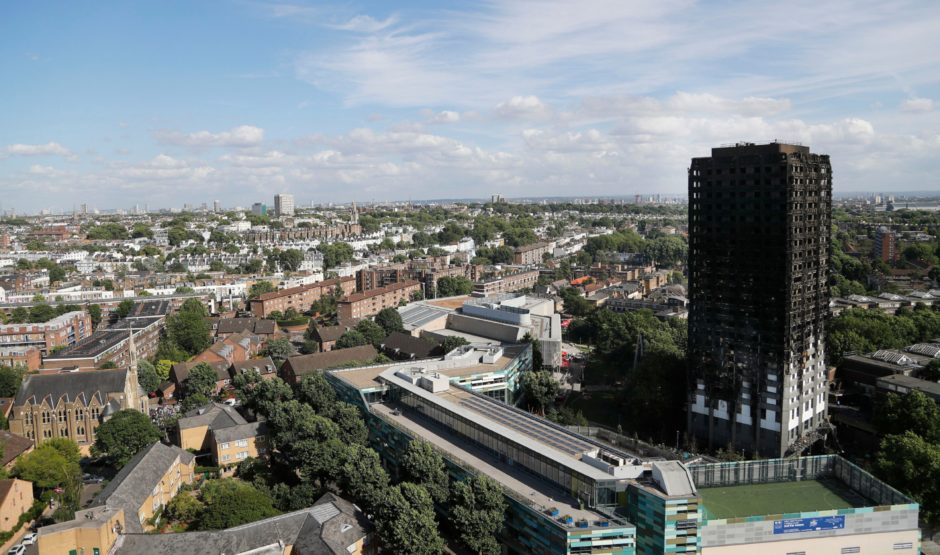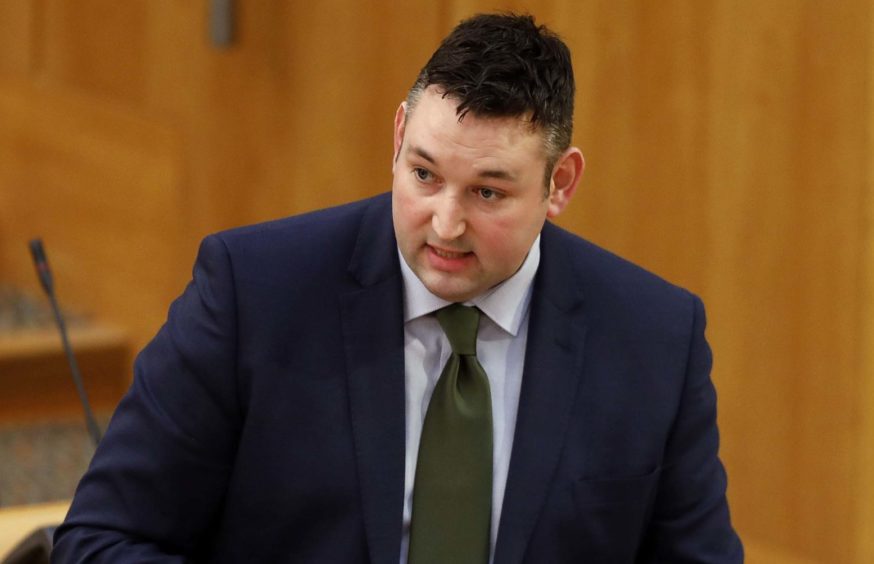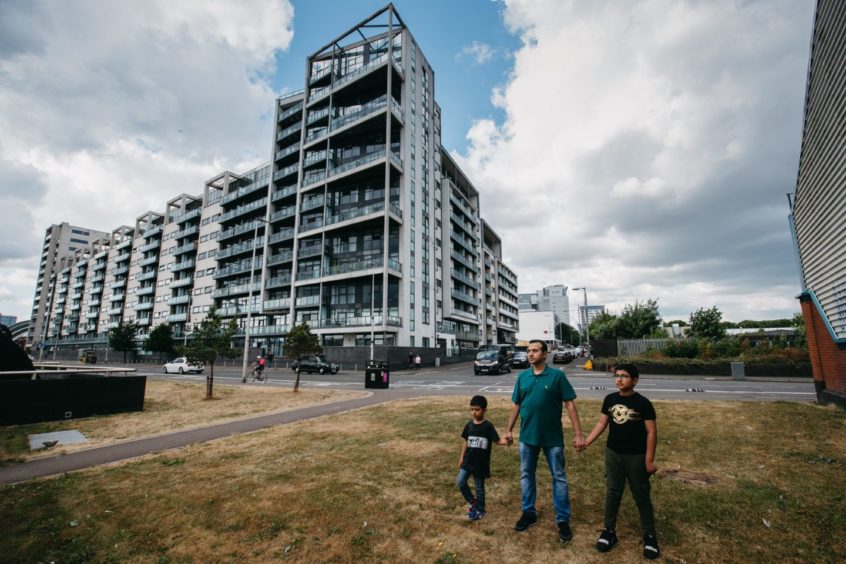
More than four years after the devastating fire at Grenfell Tower, thousands of Scots families continue to live in flats with potentially deadly cladding.
A pilot scheme to assess the number of affected buildings has only just been launched, with free tests set to be carried out on 25 buildings. However, property owners are still waiting to learn the details of any compensation scheme.
In England payments have started, along with work to remove dangerous cladding after the blaze at the London tower block in June 2017 when 72 people died.
The Scottish Government says around 700 high-rise buildings and many more smaller buildings have cladding which will need to be checked but owners have criticised the speed of the response.
Flat owner Abhijeet Kadwe, from Glasgow, said: “I am beyond shock at how long this is taking to get under way, considering the risk to people’s safety.”
Cladding fears
After Grenfell, when combustible cladding was blamed for the swift spread of fire on the high-rise, a special remedial fund of almost £100 million was given to the Scottish Government to help address the cladding fears. It is believed that Holyrood can expect a further £350m from Westminster to deal with the costs of removal and replacement.
The Scottish Government insists all of the £97.1 million it has received so far will be used to tackle cladding but how much compensation owners will receive, and when, remains uncertain. After being accused of failing to release the funds, ministers announced a programme of free safety assessments in March to determine which properties have material needing to be removed.
The Single Building Assessment is available for free for all buildings thought to be at risk, regardless of their height, and this includes local authority and registered social landlord buildings.
More than 100 local authority tower blocks are believed to have cladding that will need to be checked. Local authority buildings found to require work will be the responsibility of that council.
Chris Ashurst, co-ordinator of the High Rise Scotland Action Group, cautiously welcomed the news that free safety assessments are now being trialled. “Everyone affected would like this project to move forward more quickly than it has been but we do understand that there is no magic wand,” he said. “Wheels are grinding slowly but it is encouraging that things are finally starting to get under way.
“We understand that more than a dozen buildings are on the list for the pilot scheme and that they are currently being assessed. But it will be another few months before we have a clearer picture about what will happen across Scotland.” He added: “It is still early days but we have to get this right. There is a lot at stake for a lot of people.”
High Rise Scotland Action Group added last night that there were 333 registrations of interest for the pilot scheme, however only 123 of these had the required documentation, and out of these, just 25 have been included. The group said that these are progressing but an actual inspection has been commenced on just one of the buildings.
Solicitor Shawn Wood, of Watermans Legal in Edinburgh, which has set up an online advice service for flat owners, said: “The process is extremely slow and there does not appear to be any urgency. Many owners and renters have no idea if they are living in a safe environment, which is causing them huge anxiety. Further, owners are left wondering if they can even sell their property at this time as the cladding problem may make their property less desirable for purchasers.”
He said getting insurance for a property which might be at risk was also a growing problem.
He said: “This has serious implications. It is likely to be a breach of the title deeds and also a breach of the mortgage terms as the lender will insist upon insurance at all times. As you can imagine, this is causing great difficulty with conveyancing as buyers, and their lenders, may not want to take the risk and buy a property where there is no insurance in place.”
Testing scheme welcomed
The Property Managers Association Scotland, which represents factors, welcomed the government testing scheme. It said: “The complexity of the situation and the number of involved parties – including lenders, building insurers and conveyancing solicitors, in addition to the essential suitably qualified and insured surveyors, resulted in the need for a well considered approach.”
Scottish Conservative housing spokesperson, Miles Briggs said the Scottish Government had been too slow to act. He said: “They have taken far too long and are now playing catch-up on the rest of the UK who have moved far quicker to address this serious issue.
“Only now are the SNP Government carrying out assessments, leaving thousands of properties still at risk of fire in Scotland.” Scottish Labour’s Housing spokesman Mark Griffin said: “This scheme’s launch is welcome news but the Scottish Government’s failure to act quickly has left thousands trapped in potentially deadly homes. This scheme must move from pilot to fully operational as quickly as possible to end the horrifying delay.”
The Scottish Government said: “We have selected the buildings to be included in the pilot phase of our Single Building Assessment programme and are in the process of beginning the assessments themselves. The costs associated with the Single Building Assessment Programme, which will provide us with the clear evidence on the total need for remediation, will be met by the Scottish Government.
“We are committed to establishing a remediation programme as quickly and safely as possible.”
It added: “We cannot guarantee that there will be enough public funds to support all the work that is needed, and other parties including developers must play their part where construction is not as it should have been.”
I fear for the safety of my children every day. I am beyond shock at how long this is taking
– Flat owner Abhijeet Kadwe
Abhijeet Kadwe lives in fear… the sight of the flats where his family lives is a daily reminder their home is wrapped in combustible cladding.
The 39-year-old business analyst moved into a riverside apartment at Finnieston, Glasgow, in May 2018 with his wife Monica and their two young sons, Kiaan, five, and Advay, eight.
However, not long afterwards he discovered the block was covered in aluminium composite cladding, similar to that used on the Grenfell Tower.
He said he and fellow residents paid around £10,000 for an independent survey on the building last year which highlighted a number of other fire risks, as well as the cladding.
They were told the building would be a priority to have a safety assessment done under the Scottish Government’s One Building pilot scheme but said that he has been left in the dark for months as to when this might happen.
“The implementation of this scheme has been far too slow and there is not even a proper line of communication between the government and residents,” he said. “I am beyond shock at how long this is taking to get under way, considering the risk to people’s safety.
“I fear for the safety of my kids every day. Living with this situation takes its toll not just financially but also on your mental wellbeing.”
Kadwe – who paid just over £210,000 for the property – said he hoped that residents will eventually have the survey money reimbursed by the Scottish Government but that for some residents, costs are already mounting up.
“I can’t sell the place at the moment because it is not mortgageable and I also expect our insurance premiums to go through the roof on renewal,” he said. “I have heard from people who live in other phases of our development that their insurance costs have more than tripled.
“It is encouraging that a pilot scheme to assess affected buildings is under way but things need to start moving with a lot more urgency.”
He added: “So far I haven’t heard of anyone who has yet received a penny in assistance from any government scheme. At the moment, it is all just on paper.”

Enjoy the convenience of having The Sunday Post delivered as a digital ePaper straight to your smartphone, tablet or computer.
Subscribe for only £5.49 a month and enjoy all the benefits of the printed paper as a digital replica.
Subscribe © AP/Shutterstock
© AP/Shutterstock © Andrew Cowan/Scottish Parliament
© Andrew Cowan/Scottish Parliament © Andrew Cawley
© Andrew Cawley